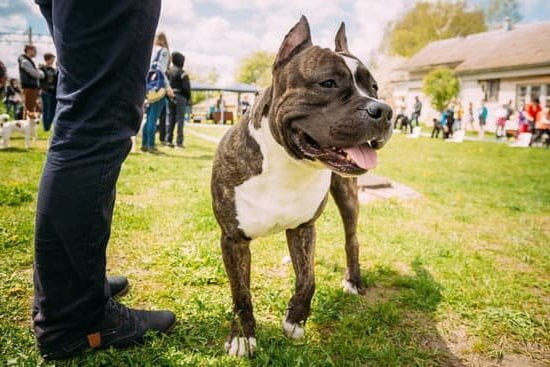Brushing your dog’s teeth is an essential aspect of their overall health and well-being. Just like us, dogs require proper dental care to prevent oral health issues such as plaque buildup, gum disease, and tooth decay. In this article, we will explore how to train your dog to brush their teeth effectively, ensuring their dental hygiene is maintained.
Regularly brushing your dog’s teeth comes with a myriad of benefits. Not only does it prevent bad breath and painful dental problems, but it also helps in reducing the risk of more serious health issues such as heart disease and organ damage. A healthy mouth contributes to a happy and active pet, making the effort put into training them well worth it.
Understanding the dental health of dogs is crucial in recognizing common issues and problems that may arise if proper oral care is neglected. By familiarizing yourself with the potential risks associated with poor dental hygiene in dogs, you can take proactive steps to ensure your furry friend’s mouth remains clean and healthy.
Stay tuned as we delve deeper into the importance of brushing your dog’s teeth and how to make this task a positive experience for both you and your pet.
The Benefits of Brushing Your Dog’s Teeth Regularly
Preventing Dental Disease
Regular brushing of your dog’s teeth can play a significant role in preventing dental diseases such as gingivitis, periodontal disease, and tooth decay. By removing plaque and tartar buildup, you can lower the risk of these issues that can not only affect your dog’s oral health but also their overall well-being. Just like humans, dogs require good dental hygiene to maintain optimal health.
Improving Breath Odor
One common complaint among pet owners is bad breath in dogs. This unpleasant odor can often be attributed to poor oral hygiene and the presence of bacteria in the mouth. Brushing your dog’s teeth regularly can help reduce bad breath by eliminating bacteria and food particles that contribute to the smell. A fresh breath not only benefits your furry friend but also makes interactions more pleasant for both of you.
Preventing Costly Vet Visits
Dental cleanings at the veterinarian can be expensive and may require sedation for thorough cleaning. By establishing a routine of brushing your dog’s teeth at home, you can potentially reduce the frequency and need for professional cleanings.
This not only saves you money in the long run but also minimizes the stress on your dog from undergoing sedation procedures. Taking preventive measures through regular brushing is a proactive approach to maintaining your dog’s dental health while avoiding unnecessary vet visits.
Understanding the Dental Health of Dogs
Dental health is just as crucial for our furry friends as it is for us humans. Just like with people, neglecting your dog’s oral hygiene can lead to a range of issues, including bad breath, plaque buildup, gum disease, and tooth decay.
The American Veterinary Dental College recommends that pet owners brush their dog’s teeth regularly to prevent these problems. By taking the time to train your dog to accept teeth brushing, you can significantly improve their overall dental health and quality of life.
One of the most common dental issues for dogs is periodontal disease. This condition occurs when bacteria in plaque and tartar buildup on the teeth cause inflammation in the gums. Over time, this can lead to infection, tooth loss, and discomfort for your furry companion. Other common problems include broken or fractured teeth, oral tumors, and misaligned bite patterns. Regular brushing can help prevent these issues by removing food particles and bacteria before they have a chance to cause damage.
Training your dog to brush their teeth may seem like a daunting task at first, but with patience and consistency, it can become a positive bonding experience for both of you. Begin by introducing your dog to the toothbrush and toothpaste gradually. Allow them to sniff and lick the products so they can become familiar with the new items in their routine.
Use positive reinforcement techniques such as treats or praise to reward them for calm behavior during each step of the process. With time and practice, your dog will learn to associate teeth brushing with positive experiences and will be more receptive to the activity.
Choosing the Right Toothbrush and Toothpaste for Your Dog
When it comes to training your dog to brush their teeth, choosing the right toothbrush and toothpaste is essential. Just like humans, dogs have specific dental needs that require the proper tools for effective cleaning. Here are some guidelines on selecting the most suitable products for your furry friend.
Choosing the Right Toothbrush
There are various types of toothbrushes available for dogs, including traditional brushes, finger brushes, and even enzymatic brushes. The size of the toothbrush should be appropriate for your dog’s mouth – large breeds may need a bigger brush while smaller breeds might do better with a smaller one. It’s important to opt for a toothbrush with soft bristles to prevent any harm to your dog’s gums during brushing.
Selecting the Right Toothpaste
Unlike human toothpaste, dog-specific toothpaste does not contain fluoride or other ingredients that could be harmful if swallowed. Look for enzymatic toothpaste designed specifically for dogs, as they help break down plaque and tartar effectively. Additionally, choose a flavor that your dog enjoys, such as poultry or beef, to make the teeth brushing experience more pleasant for them.
Frequency of Replacement
Remember to replace your dog’s toothbrush regularly to ensure efficient cleaning. Over time, bristles can wear out and lose their effectiveness in removing plaque and tartar. As a general rule of thumb, aim to replace your dog’s toothbrush every 2-3 months or sooner if you notice signs of wear and tear. By providing your dog with a fresh toothbrush, you’ll be able to maintain their oral health successfully.
By carefully selecting a suitable toothbrush and toothpaste for your dog, you’ll be setting them up for success in their dental hygiene routine. These products play a crucial role in ensuring that your furry companion maintains healthy teeth and gums throughout their life. Remember to introduce these tools gradually during training sessions on how to train dog to brush teeth so that your pet becomes accustomed to the process without feeling intimidated.
Introducing Your Dog to the Concept of Teeth Brushing
When it comes to maintaining your dog’s overall health, dental hygiene plays a crucial role. Just like humans, dogs need regular teeth brushing to prevent dental issues such as plaque buildup, tartar, and gum disease. Introducing your furry friend to the concept of teeth brushing may seem daunting at first, but with patience and positive reinforcement, you can make it a part of their routine.
To start the process of training your dog to brush their teeth, it is important to choose the right tools. Select a toothbrush specifically designed for dogs – these are usually softer and have angled bristles to reach all areas of their mouth. Additionally, opt for toothpaste made specifically for dogs as human toothpaste can be harmful if swallowed. Gradually introduce these items to your dog by letting them sniff and get accustomed to the taste.
Here is a step-by-step guide on how to train your dog to brush their teeth:
- Start by getting your dog comfortable with having their mouth touched. Gently lift their lips and give them treats or praise.
- Once they are comfortable with this step, start touching their teeth and gums with your finger or a soft cloth.
- Gradually introduce the toothbrush with a small amount of toothpaste and gently brush in circular motions. Make sure to reward them afterward.
With patience and consistency, you can help your dog understand that teeth brushing is a positive experience. Remember that each dog is different, so go at their pace and make it an enjoyable bonding time between you and your furry companion.
Step-by-Step Guide on How to Train Your Dog to Brush Their Teeth
Dental hygiene is just as important for our furry friends as it is for us. Brushing your dog’s teeth regularly can help prevent dental issues such as plaque, tartar, and gum disease. However, many dog owners struggle with the idea of how to train their dogs to tolerate and even enjoy having their teeth brushed.
To start training your dog to brush their teeth, begin by getting them used to having their mouth touched. Gently lift their lips and touch their teeth and gums for short periods of time, giving them treats and praise as a reward. This will help your dog become comfortable with the sensation of having their mouth handled.
Once your dog is comfortable with having their mouth touched, introduce them to the toothbrush and toothpaste. Use pet-specific toothpaste in flavors like chicken or beef that are appealing to dogs. Let your dog taste the toothpaste first before applying it to the brush. Then, slowly start brushing your dog’s teeth using circular motions on the outer surfaces. Gradually increase the length of each brushing session as your dog becomes more accustomed to the process.
| Training Tips | Description |
|---|---|
| Start Slowly | Begin by getting your dog used to having their mouth touched before introducing the toothbrush. |
| Use Positive Reinforcement | Reward your dog with treats and praise during and after each brushing session to make it a positive experience. |
| Be Patient | Training takes time, so be patient and consistent with your efforts in teaching your dog how to brush their teeth. |
Consistency is key when training your dog to brush their teeth. Make sure to establish a routine and stick to it every day. Over time, you will find that your furry companion will become more cooperative during teeth brushing sessions, leading to better overall dental health for your beloved pet.
Tips and Tricks for a Successful Teeth Brushing Session
Successfully brushing your dog’s teeth requires patience, consistency, and some strategies to make the process easier for both you and your furry friend. Here are some tips and tricks to help you have a successful teeth brushing session:
- Start slow: Introduce your dog to the toothbrush and toothpaste gradually. Let them sniff and lick the toothpaste first before attempting to brush their teeth. This helps them get used to the taste and texture.
- Use positive reinforcement: Reward your dog with treats or praise during and after each brushing session. Positive reinforcement will help create a positive association with teeth brushing, making it more enjoyable for your dog.
- Make it a routine: Establish a regular schedule for brushing your dog’s teeth. Consistency is key in training, so aim to brush their teeth at the same time every day to make it a part of their daily routine.
In addition to these tips, there are some other techniques you can use to make the teeth brushing process easier for you and your dog:
- Use a toothbrush designed specifically for dogs: These toothbrushes are smaller and softer than human toothbrushes, making it easier to maneuver in your dog’s mouth.
- Be gentle: When brushing your dog’s teeth, use gentle circular motions on each tooth surface. Avoid aggressive scrubbing, as this can cause discomfort or damage to their gums.
- Stay calm: Dogs can pick up on their owner’s emotions, so try to stay calm and patient during the teeth brushing session. If you are relaxed, your dog is more likely to be cooperative.
By following these tips and tricks, you can ensure that your dog’s dental hygiene routine is effective and stress-free for both of you. Remember that consistency and positive reinforcement are key when training your dog to brush their teeth regularly. with these simple techniques, you will be on your way to maintaining good dental health for your beloved pet.
Troubleshooting Common Challenges in Training Your Dog to Brush Their Teeth
Training your dog to brush their teeth can be a challenging task, but with patience and consistency, it is definitely achievable. One common challenge that many dog owners face is resistance from their furry companions. Dogs may not initially understand the concept of having their teeth brushed and may react by squirming, trying to bite the toothbrush, or simply refusing to cooperate. This is perfectly normal behavior, and it’s important not to get discouraged.
To address this challenge, start by introducing your dog to the toothbrush and toothpaste gradually. Allow them to sniff and lick the toothpaste so they can get used to the taste and texture. You can also try using tasty toothpaste flavors specifically designed for dogs, such as chicken or beef, to make the experience more enjoyable for them. Additionally, use positive reinforcement techniques like treats and praise to reward your dog for good behavior during teeth brushing sessions.
Another common challenge when training your dog to brush their teeth is the difficulty in handling them during the process. Some dogs may become anxious or agitated when you try to hold their muzzle or open their mouth. In such cases, it’s important to take things slow and respect your dog’s boundaries.
Gradually work on desensitizing them to having their mouth touched by gently massaging their gums with your finger before introducing the toothbrush. This will help them get used to the sensation and make teeth brushing less stressful for both of you.
Overall, patience and positive reinforcement are key when facing challenges in training your dog to brush their teeth. Remember that every dog is different, so what works for one may not work for another. By taking gradual steps, using rewards, and making the experience as pleasant as possible, you can help your furry friend develop good dental hygiene habits that will benefit their overall health in the long run.
| Common Challenges | Solutions |
|---|---|
| Resistance from Dog | Gradual introduction of toothbrush & toothpaste; Use of tasty flavored toothpaste; Positive reinforcement with treats & praise |
| Difficulty in Handling Dog | Desensitization by gentle gum massages; Respecting boundaries; Taking things slow during training sessions |
Maintaining Good Dental Hygiene for Your Dog
Regular dental check-ups are essential for maintaining good oral hygiene in dogs. Just like humans, dogs can develop tartar build-up, cavities, and gum disease if their teeth are not properly cared for. By taking your dog to the veterinarian for regular dental check-ups, you can catch any potential issues early on and prevent more serious dental problems down the line.
In addition to regular check-ups, there are other preventive measures you can take to ensure your dog’s dental health. Providing chew toys or dental treats can help reduce plaque and tartar build-up on your dog’s teeth. These chew items can also help keep your dog’s gums healthy and improve their overall oral hygiene.
Overall, maintaining good dental hygiene for your dog is crucial for their overall health and well-being. By following a proper teeth brushing routine, introducing preventive measures, and scheduling regular check-ups with your veterinarian, you can help keep your dog’s mouth healthy and happy.
Remember that patience and consistency are key when training your dog to brush their teeth – with time and practice, you can make this important task a positive experience for both you and your furry friend.
Frequently Asked Questions
How Do You Brush a Dog’s Teeth That Won’t Let You?
Brushing a dog’s teeth can be challenging if they resist. One approach is to start slowly by getting them used to the toothbrush and toothpaste gradually. This can involve letting them sniff and lick the toothbrush before attempting to brush.
How Do You Train My Dog to Let Me Brush His Teeth?
Training a dog to allow teeth brushing involves positive reinforcement and patience. Start by associating the toothbrush with something positive, like treats or playtime. Gradually introduce brushing movements while rewarding good behavior. Consistency is key in establishing this routine.
Is It Too Late to Brush Dogs Teeth?
It is never too late to start brushing a dog’s teeth, even if they have never been brushed before. While it may be more challenging with an older dog, introducing tooth brushing gradually and patiently can still be beneficial for their oral health.
Consult with a veterinarian for specific advice on how to proceed based on your dog’s age and condition.

Welcome to the blog! I am a professional dog trainer and have been working with dogs for many years. In this blog, I will be discussing various topics related to dog training, including tips, tricks, and advice. I hope you find this information helpful and informative. Thanks for reading!





